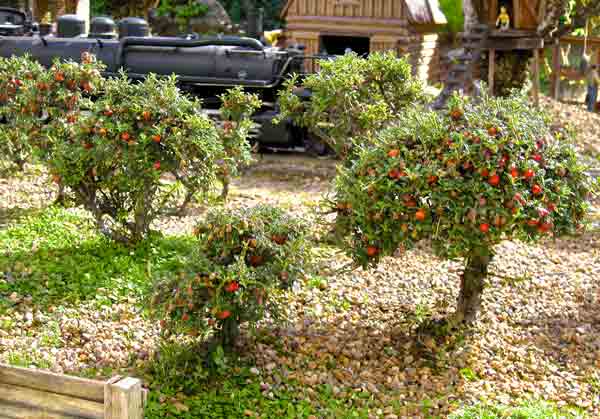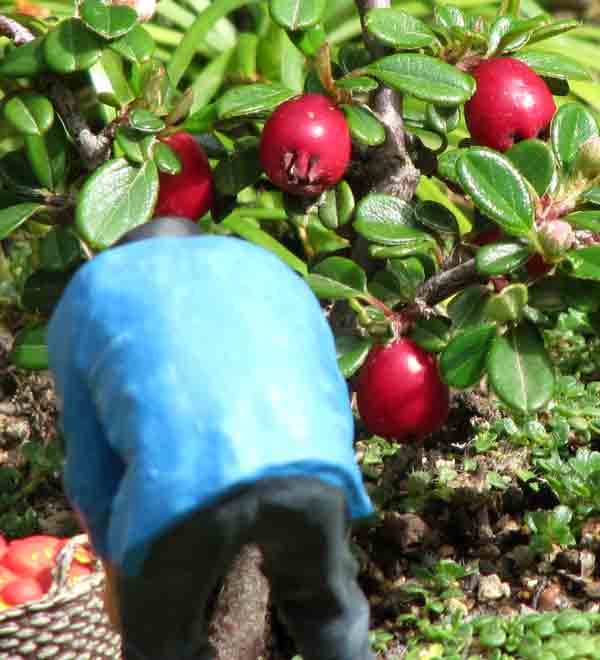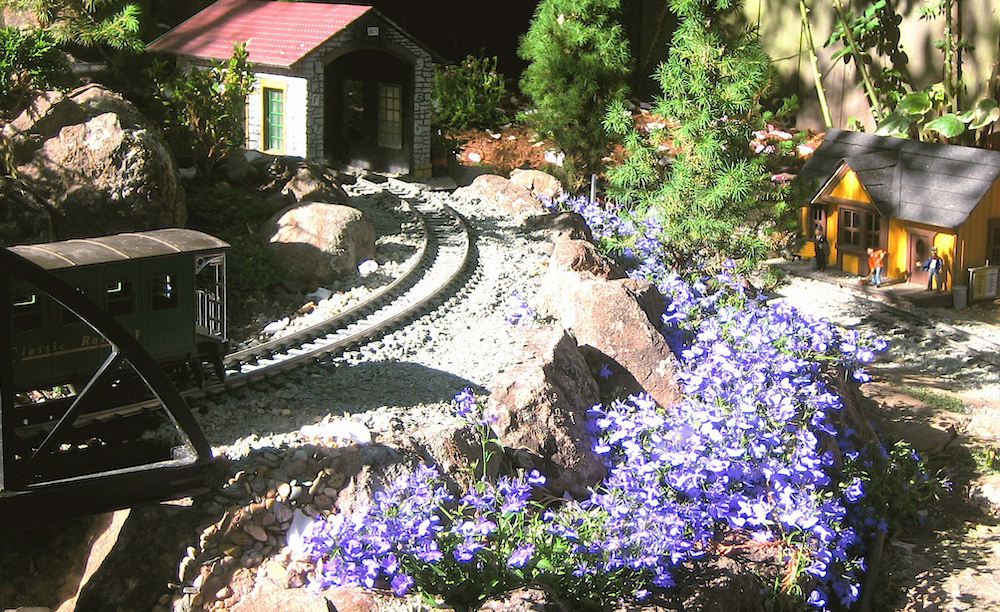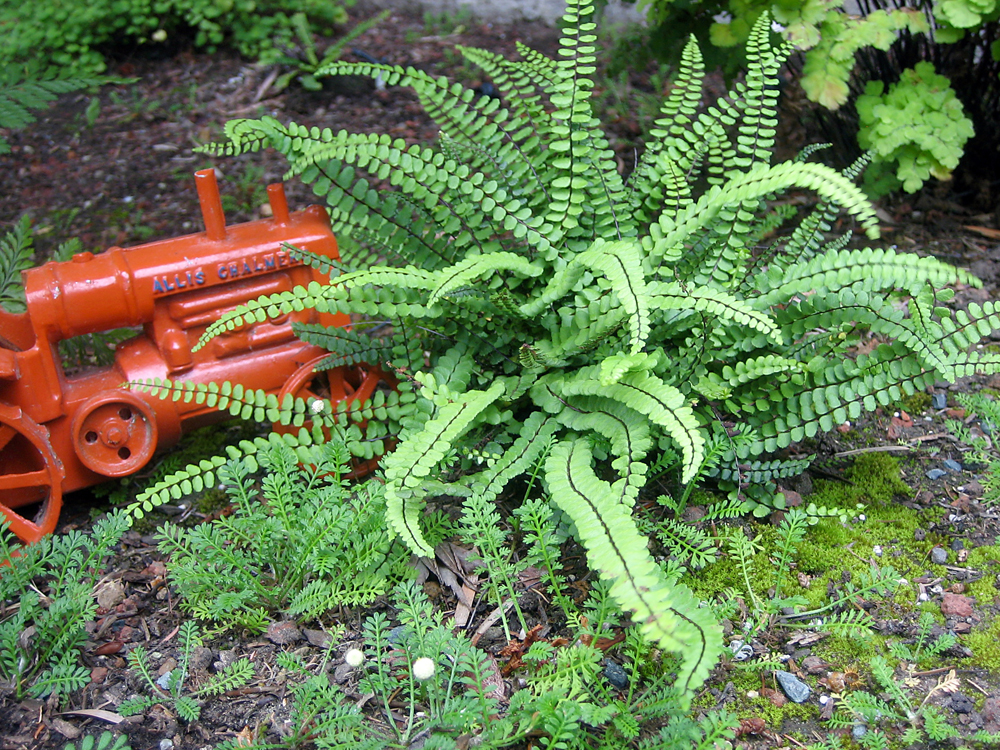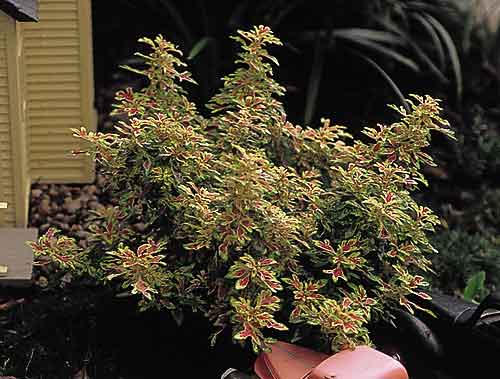Latin name: Cotoneaster microphyllus var. thymifolius
Plant type: Shrubs and small trees
USDA Hardiness Zones: 5-11 (marginally in Zone 4, with snow cover)
Cultural needs: Average, well-drained soil; sun for fruit
Plant size: Less than 12″ and spreading, unless trained
Although the common name of this import from China is “rockspray,” most gardeners refer to it as cotoneaster (not cotton-easter, but ca-TONY-aster). However you say it, this plant is rugged and wants to grow from every inch of wood, literally spraying branches in all directions. Never pruned, many species of this genus will hug the ground: C. microphyllus (pictured), C. adpressus, C. apiculatus, C. horizontalis, and C. dammeri (the inset picture is of C.d. ‘Streib’s Findling’) are the lowest and hardiest. For a detailed description of all these plants, see http://davesgarden.com/guides/articles/view/915/
If you’d like to create the pictured orchard, C.m. thymifolius grows the slowest and lets you enjoy the apple-tree appearance for a while before it requires pruning of branches from the trunk, which sometimes emerge from below the soil level. Use pointed scissors for pruning. Most cotoneasters bloom freely, with small white flowers in spring and early summer, even while berries from the previous fall hang on and hold their red color. The smallest, tightest rockspray is the cultivar C. adpressus ‘Little Gem’ (aka C.a. ‘Tom Thumb’) but it rarely flowers, so your little trees would not produce apples easily. Rarely bothered by pests, spray with insecticidal soap to control spider mites.





